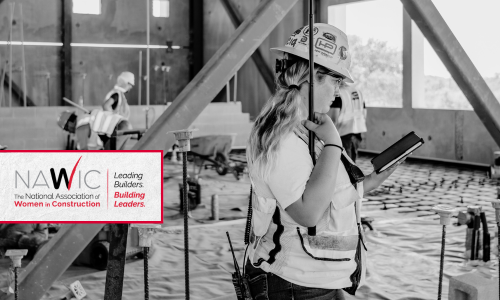Digital Literacy Skills in Construction Education
Construction education programs that build digital literacy ensure a workforce that has the expertise necessary for success.

In today’s everchanging technological landscape of connected data and mobile platforms, digital literacy and resilience are crucial. Construction education programs that build digital literacy ensure a workforce that has the expertise necessary for success.
According to Stack, a cloud-based construction software company, “Technology is directly addressing issues driven by the construction labor shortage, with increased efficiency and the mentality and ability to ‘do more with less.’ Contech tools provide a level playing field, allowing women to showcase their skills and contribute to the construction lifecycle, irrespective of gender, and closing the workforce shortage gap.”
According to a 2020 report from the National Skills Coalition, 22 percent of currently employed U.S. construction, transportation, and storage workers had no digital skills; 28 percent had limited skills; and 32 percent were proficient. Only 18 percent had the advanced skills necessary for future success.
Digital literacy is more than being able to type up a document, use a spreadsheet, or send an email. It’s having the skills to perform tasks on digital devices and the higher-level thinking to understand processes and adapt to changing technology and interfaces. In the assessment featured in the National Skills Coalition report, proficiency was determined through prior computer usage, the willingness to participate in a computer assessment, familiarity with a computer and mouse, and completing tasks such as sorting emails or navigating menus for more complex objectives.
Construction education and the digital transformation
The digital transformation has meant that construction workers, in the field and in the office, need to be able to manage a wide range of technology, which may include:
- Smart wearables. These include smart helmets which can be equipped with an internet connection, sensors, cameras, smartphones, voice command, GPS, RFID, and safety features like fall detection and a panic button.
- Drones
- Robotics
- VR technology
- Workforce planning software that syncs real-time data
- BIM software
- Cloud-based data collection for synchronization and analysis
- Advanced estimating tools
- Online safety training modules
Passing the torch to the next generation
Digital literacy in construction education can also help build a more informed workforce by enabling the knowledge of seasoned construction professionals to be captured and shared. For new construction workers, especially women who may face discrimination from older, male colleagues, having that institutional knowledge available digitally and having the skills to access it can lead to greater career success as well as a more productive workforce.
Buildings Magazine notes that “Digital tools can add value in helping cultivate a skilled, self-reliant and resilient workforce by putting the source of knowledge in employees’ hands…. Digital tools can also help institutionalize knowledge from veterans for newer employees’ benefit.”
Digital resilience in construction education
Resilience is a major component of digital literacy in construction education. The federal Digital Resilience in the American Workforce initiative (DRAW) defines digital resilience as “the awareness, skills, agility, and confidence necessary to be empowered users of new technologies, actively participate in society, and adapt to the labor market’s ever-changing demands for digital expertise.”
Construction education programs can build digital literacy skills by:
- Training instructors on digital literacy best practices
- Providing access and opportunities for workers to learn and practice skills
- Assessing skills at all stages to ensure progress
- Emphasizing resilience and adaptability
The success of women in construction is amplified with education.
That’s why you’ll find construction education resources for all levels of experience on the NAWIC website. NAWIC, NAWIC Education Foundation (NEF), and affiliated programs offer opportunities for women working in the trades, as construction professionals, and in management to participate in construction education and professional development.
However, construction education is just one of the ways that NAWIC builds women construction leaders. NAWIC supports all women working in construction with advocacy, networking, mentorship, education, and leadership training opportunities. Whether in the field or in the office, our members benefit from the shared knowledge and experiences of more than 5,500 members in more than 120 chapters and 8 regions. Contact a chapter near you to learn more.


